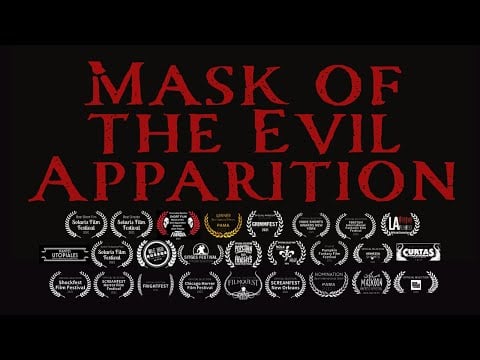Alex Proyas’ “Dark City” feels like a warmup for some of the greatest existentialist thrillers to come.
Proyas’ 1998 film quickly became a cult favorite after a failed theatrical release (more on that later) but comes across as a starter dish for the sumptuous genre meals right around the corner.
By fusing the visuals and themes of Fritz Lang (particularly his “M” and “Dr. Mabuse”) and Robert Wiene (his “The Cabinet of Dr. Caligari” is the only silent film “borrowed” from as much as Lang’s “Metropolis”), we have a work that, in ambition, richness and quality, works as a cousin to the forthcoming “The Matrix” (1999), “Memento” (2001), “Inception” (2010) and dozens more.

The plot: John Murdock (Rufus Sewell) awakens in an apartment stricken with amnesia. Adding to his dilemma is the presence of a corpse on the floor as well as a bloody knife with his fingerprints on it. Sympathy comes in the form of John’s wife (Jennifer Connelly) and a detective (William Hurt) who doesn’t believe Murdock is the killer.
In addition to the local law, John is being pursued by bald, pale men in dark trench coats and fedoras called The Strangers, who have the supernatural ability to make you sleep on command.
Proyas’ thrilling, fittingly nightmarish horror/detective film noir/ sci-fi/action puzzle is one of those films few saw in theaters but developed a massive appreciation for later.
Like Shane Caruth’s “Primer” (2004), example, “Dark City” passed through theaters with little notice but was singled out by cinephiles and film scholars as a smart packaging of what had come before and a visionary sign of things to come for the genre. More so than the visual qualities, which are enormous, the imagination on display is staggering.
The screenplay by Proyas, Lem Dobbs (who, in a perfect bit if synergy, also wrote Steven Soderbergh’s underrated 1992 “Kafka”) and David S. Goyer (whose career redemption after writing the wretched sequel to “The Crow” started here) is in love with film noir, The Hitchcockian Wronged Man, Arthur C. Clarke-like musings on existentialist sci-fi and all things Kafkaesque dread.
At the time of its release, the comparison made the most frequently was “Blade Runner” (1982), but Proyas is actually leaning into the paranoia of the dream state, the untrustworthy functions of our subconscious, in a way that predates “Inception” but feels right in line with the studio’s “A Nightmare on Elm St.” series.
A special 25th anniversary screening of Alex Proyas’ DARK CITY will screen in 35mm at midnight, May 5th.
A man struggles with memories of his past, which include a wife he cannot remember and a nightmarish world no one else ever seems to wake up from. pic.twitter.com/sYIHe5ObnS
— Chicago Critics Film Festival (@CriticsFf) April 17, 2023
This was made during that glorious period where New Line Cinema (and producer Michael De Luca in particular) were taking big, wild creative swings, such as this, “Pleasantville” (1998) and “Magnolia” (1999). That’s before “The Lord of the Rings” trilogy (2001-2003) solidified the studio’s legacy.
I’ve always thought Sewell was miscast, though, upon reflection, I’m now on the fence about this. John is supposed to come across as kind enough that he saves a goldfish during his introductory moment.
He also must convey an emotional connection with Connelly’s character (the two have zero chemistry). Sewell’s “American” accent is excellent and he works hard in the role, but there’s something too prickly about him that makes his ability to overcome The Strangers inevitable.
On the other hand, during the grand finale, Sewell flashes a bone-chilling grin at The Strangers (Proyas wisely included this in the final cut, as it brings to mind Brandon Lee’s frightening leer in “The Crow”) and, in his final moments, the actor belatedly connects to the humanity of the character.
FAST FACT: Proyas created a 20-minute short film, “Mask of the Evil Apparition,” in 2021 that’s set in the “Dark City” universe.

Aside from my indecisive attitude about Sewell in the lead, the cast is beautifully assembled. Connelly invests feeling into her character and Hurt was oddly credible in films like this and “Until the End of the World” (1991). Hurt was a contemporary actor in every sense who, nevertheless, excelled in strange movies like this and “Altered States” (1980).
Kiefer Sutherland’s stylish performance, with a noted affectation intended to mimic Peter Lorre, takes some getting used to. The ingenious way Sutherland’s bizarre character is fused into the climax, as a central figure in a collage of memories, utilizes the actor in the best light.
The Strangers are unsettling, cruel and truly loathsome, great qualities in super villains. A master stroke was assigning the central Strangers (whose appearance makes for a comparison to the Borg) to the wonderful Richard O’Brien and Sir Ian Richardson.
RELATED: WHY WE LOVE DYSTOPIAN FILMS
The screenplay impresses for bringing up big ideas and staggering visuals, not just for spectacle but to explore the sense of identity that John seeks, and The Strangers casually alter. Unlike many works that have a strong start but fumble in the third act, “Dark City” soars in its last 30-minutes, more than fulfilling and surpassing the scope of its initial ideas.
Nevertheless, because the story is so untamed, some details don’t entirely add up: I’ve never cared for the moment where one of The Strangers falls through a bridge but, seconds later, we see that they can fly.
It feels less like a surprise reveal than a lazy bit of storytelling.
Also, if The Strangers have unmatched psychic prowess, wouldn’t they have detected the problems John would pose sooner?
View this post on Instagram
The ample visual effects run hot and cold, with the model work and large-scale exterior shots still breathtaking, but the visualization of the telepathic powers resulting in murky, dated CGI. Undoubtedly one of the greatest collaborators on hand is composer Trevor Jones, who finds exactly the right feel for each scene: Trevor’s always-exciting, awe inducing score is among his very best.
If there was anyone who reversed “Dark City” from its instant-flop-in-theaters status to a must-see, it’s the late, great Roger Ebert. In fact, Ebert wasn’t just a fan but declared it the best film of 1998.
RELATED: ‘VAST OF NIGHT’ REVEALS BOLD NEW TALENT
Back then and especially today, it’s a hard pill to swallow, arriving the same year as “The Thin Red Line”, “A Simple Plan,” “The Truman Show and “Rushmore,” to name a few. Nevertheless, Ebert’s adoration of the film gave it a surprising and deserved spotlight.
While the studio’s promotion of the film was adequate, with the trailer especially kinetic and striking, it failed to stick it in a market dominated at the time by the unstoppable run of “Titanic.”
Today, Proyas’ film is synonymous with any fantasy where the search for true identity takes place within the confines of the unconscious mind. “Dark City” carries its legacy as a milestone genre effort and a wonderful use of sci-fi to explore both the possibilities of cinema and the fragile nature and understanding of our existence.
The post ‘Dark City’ – The Flop Roger Ebert Loved Dearly appeared first on Hollywood in Toto.
0 Comments